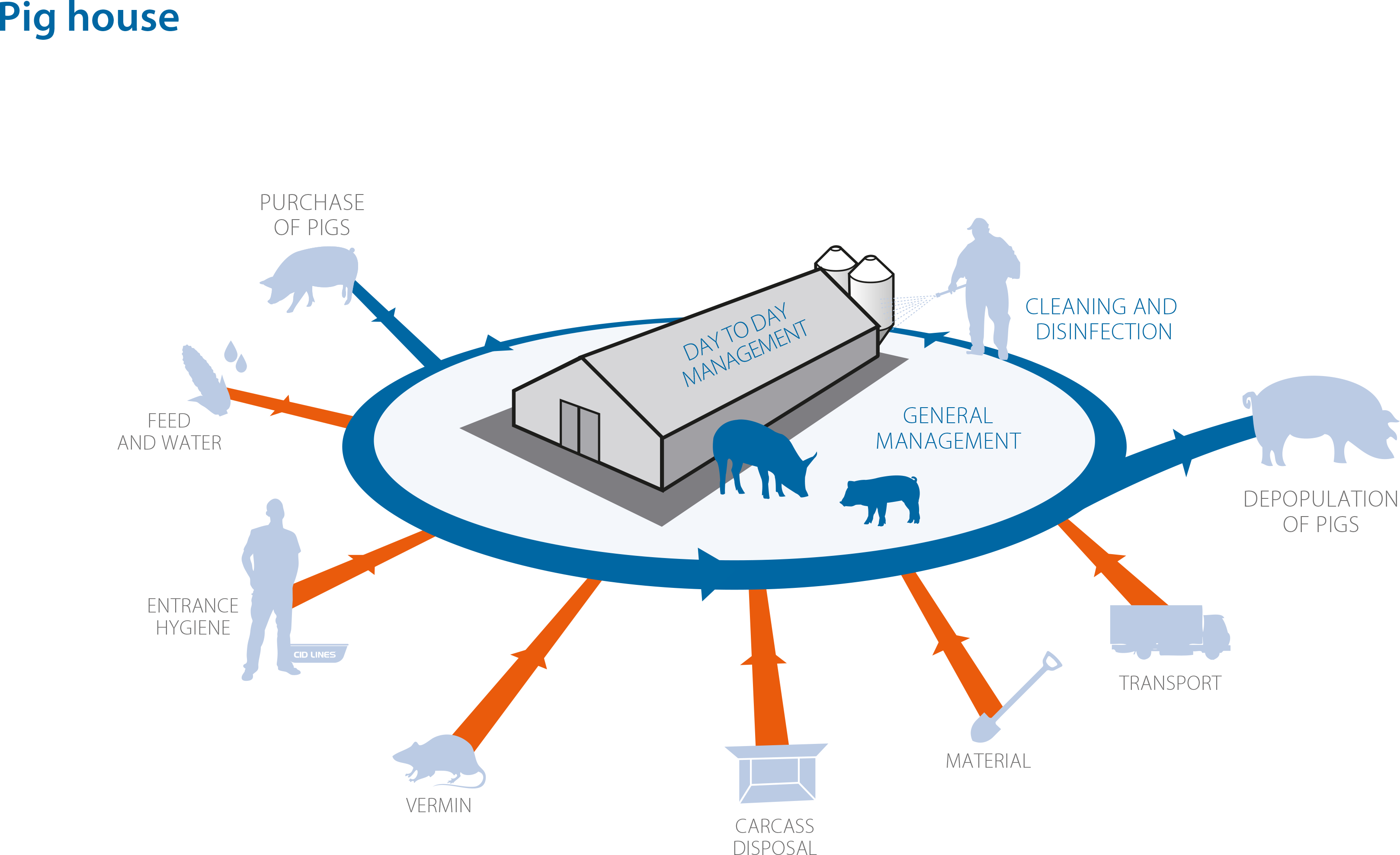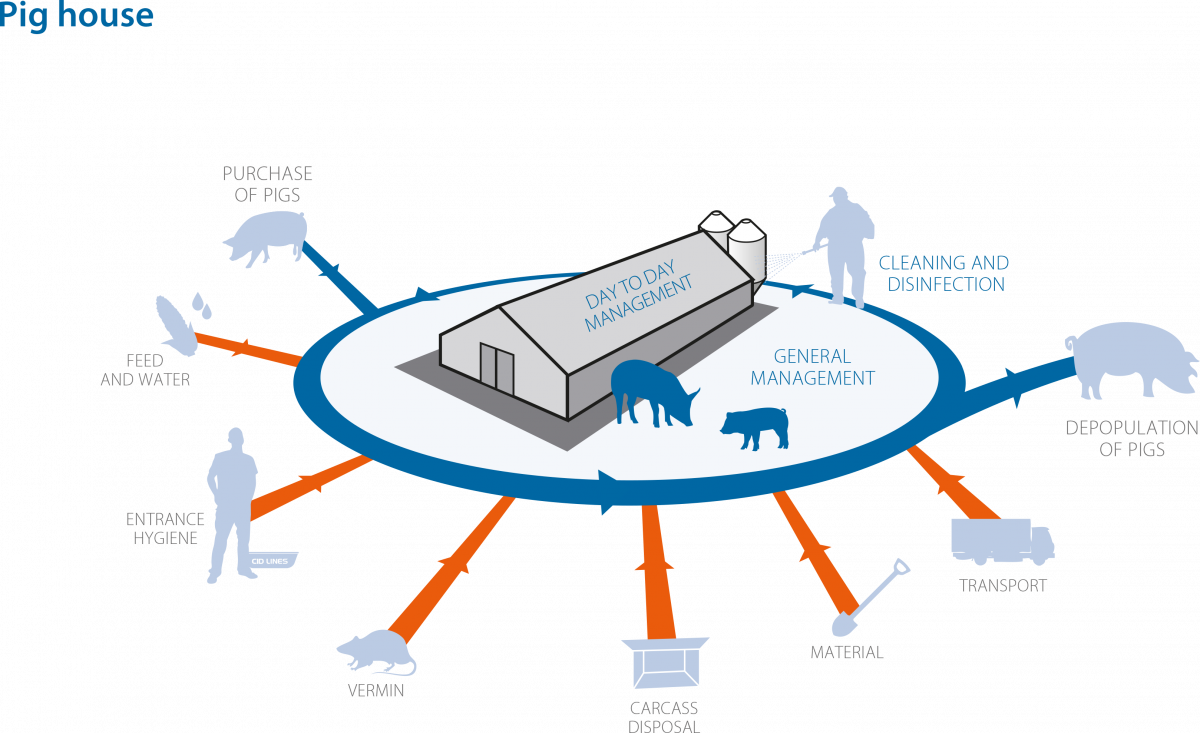
The first article was the introduction, this is the second article and this article will explain more about the general management on a pig farm.

LOCATION OF THE FARM
Since many important pathogens can be transmitted by airborne transmission, the location is considered to be a critical point in the external biosecurity at the farm.
Keep in mind following aspects when choosing the location of a pig farm:
-
Distance to nearby pig farms: the type of pig farm, the amount of animals present at the farm and the density of the animals in the neighboring pig houses can play a crucial role in the introduction of infectious germs
-
Functions that the buildings have to fulfill
-
Working lines for the farmer, the animals and the transport vehicles
-
Possibilities for further expansion
-
Separated access roads for the living and farming zones
The orientation of the farm and the position of the access and exit roads should be chosen in such a way that any contact with the outside world is kept to a minimum. Physical protection from the outside can be achieved by putting a fence around the farm. In this way, the farm area and buildings can be closed when the pig farmer is not on side.
TYPE OF PIG FARM
Pig farming can be mainly done in two different ways: under an open farm system or under a closed farm system.
In an closed farm all the animal categories are kept on one single farm: sows, piglets and growing-finishing pigs together at one location in one or more buildings. In an open farm there is most of the time only one animal category present: only sows, only piglets or only growing-finishing pigs.
Whether you opt for a closed or open system. Every choice will have important consequences on how diseases will be spread at the farm.
SOW MANAGEMENT: DIFFERENT WEEK SYSTEMS
The sows’ cycles are synchronized, which means that the main operations related to the production of piglets are no longer all carried out in the same week. This allows the pig farmer to spread his/her workload and allows him/her to focus on a particular group of sows. Using a multi-week system simplifies the work schedule and increases working efficiency.
HOUSING SYSTEM
Because the pig production industry has become very intensive over the past years, a good housing system is essential to keep the animals healthy.
Make sure
-
there is a clear separation between lying, manure and eating areas
-
there is a good ventilation system
-
there is enough light present in the pig houses
-
there is a low noise level
-
there is enough space: please keep an eye on the animal density
-
that the floor is not slippery: provide the pigs a firm, flat an stable surface to live on
-
that slats are provided with sufficient grip
-
that there are some escape routes available for the animals
-
there is enough feed and water available
ANIMAL WELFARE
Next to all the needs of a pig to have a healthy and safe environment to live in, other things can surely contribute to a good animal welfare:
-
give the animals as less stress as possible
-
give the animals enough recreational materials to explore and play
-
provide the animals dietary fiber to make them calmer
-
….
Now we explained the basics about general management, next topic is about day-to-day management (article 3).